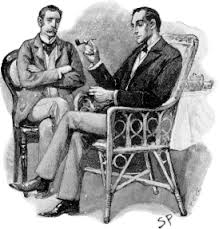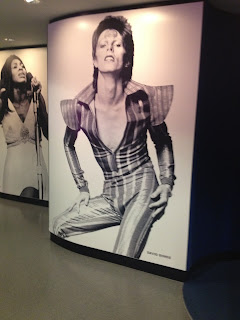 |
| non sum qualis eram |
Last October around my birthday Mark Z. Danielewski performed his book “The 50-Year-Sword” in San Francisco and I went to see him.
 |
| also here is me being sassy on my last birthday holy crap did i lose that shirt i haven't seen it around forever this could be bad i should look for it brb |
Danielewski is one of the big cult writers of the last decade. Like a lot of young people a lot like me there were few books I bonded with more than his book "House of Leaves." Its like the premier example of ergodic literature while still being this adorb melange of horror story, love story, and affectionate sendup of critical theory. It's also about monsters inside and out, and internal spaces with internal darknesses, and being consumed by these things like by black sharks in very deep water, and is in general as frightening and charming as a book can reasonably get.
(I actually started writing a better description but I ended up with like a five-paragraph intro to an academic paper focusing especially on ash-tree symbolism and like three of my favorite poems so screw that also as they say in Little Britain "that's not for here.")
 |
| if you've read it though this parody is probably super charming to you |
Here are three reasons why I loved House of Leaves so much:
1. Being ergodic it is quite literally architectural, and those kinds of stories--narratives/books as paths and structures--are like porn to me. As such, though, the book owes one million to Borges and Nabokov and Bioy Casares BUT THAT'S OKAY because, guess what, I love those books. I've read "Garden of Forking Paths" like one million times, and "Death and the Compass" has one of the few quotes I remember:
“‘The next time I kill you,’ [he] said, ‘I promise you that labyrinth consisting of a single line, which is invisible and unceasing.’ He stepped back, and very carefully, he fired.”
(AHHHH.)
 |
| also i can draw/write you this on command should you ever need this replicated immediately and without question, which i mean that happens all the time I'm sure. |
2. I am a sort of synaesthetic reader/person and the specific flow and choice of words in his books is like this sparkling psychic barrage that just pierces and hooks you and then carries you along and it is just so good, ok.
3. Suffice to say that I read it at a very strange time in my life (and I mean that in the Palahniuk quote way) when I was living in Utah and I bonded very profoundly with it and it helped me navigate my less favorite parts of BYU life.
But House of Leaves was 15 years ago now; MZD was performing his (relatively) new book, the 50-Year-Sword. It’s more of a clever little dessert piece to House of Leaves’ main course, and is stylized to perfection.
 |
| The 50-Year-Sword, which is bound just like the eponymous sword but also in such a way where it will not sit nicely on your bookshelf, so. |
You could almost read it to a (strange) child, and in fact it is framed as a story told to children although the narrator starts out like this to the kids:
“‘I am a bad man with a very black heart,” he warned them. ‘And it is only that badness and blackness which forced me to seek out what I have carried now for many years and brought this night for you.”
(ALSO AHHHH.)
I say he performed it; I mean it. He was onstage with a music stand and a conductor's baton. He had piano accompaniment and someone doing sound effects in the rafters of the venue. What was stylistic in HoL had been boiled down into prose poetry, and he spoke and sang and hissed his way through the entire novella.
As he said later, the inspiration for T50YS was when he accidentally cut himself really deep with a razor blade when he was younger, while making an airplane model. How it unfolded fascinated him--the initial swish of cold pressure, then this sort of anticipatory hang like you're tipping over a waterfall, and then of course comes the sharp bloom of pain and blood.
And that's it, that's the book--it’s about a man who found a sword whose cut would take 50 years to bloom, and the book takes place in that sick hang as you slowly realize what he’s done 50 years ago and what is going to happen shortly.
It shows in the words—it’s supposed to written in that like language of injury, cutting and percussive, with motifs of swords and blades and stitching. And of course like all of his books it plays with semiotic tropes which I just really can’t get enough of.
The performance was just so aggressively charming, although I admit I am like the ideal and target demographic for that sort of thing. All of us just grinning with delight the whole time, in the crowd of grad students and people who are so clever that they are too self-conscious for their own good so no one was relaxed at all, except in the first part, sitting in the dark and listening.
The venue was the Swedish-American Hall, so dark woods and deep fabrics and the prim heavy lines that make up faux-Scandinavian places. Everyone with dramatically dyed hair or hair so purposefully untouched that it was a point of pride. Everyone with moleskins and either wearing a lot of leather or layered knits.
(It is so funny to be so entirely a stereotype. Like when I was lost finding the Nick Cave concert venue so I just followed all the people dressed like me and it worked.)
Danielewski did not look/sound how I expected. His sister was a pretty famous goth rocker that I adored as a teen and I guess I expected him to look like that—lean and blond and fine-boned. He is actually extremely tall, and broad-shouldered. Black eyes that, like the eyes of all seriously clever people, crackled with intelligence. Combine that with black hair and really good cheekbones and I immediately developed a searing and crippling crush because I am just always going to be fourteen I guess. This crush hit peak crisis point when he put his arm round my waist to take a picture but by that time I had already spoken to him so I didn’t embarrass myself EVEN MORE after that.
OH WELL FINE IT’S FINE IT'S NOT SOMETHING I THINK ABOUT WHEN I'M CATALOGUING TIMES I'VE HUMILIATED MYSELF AT ALL.
 |
| I am including this picture even though it is not the best picture. I hope the little hearts spinning cartoonishly around my head are evident oh my god. |
What was cool was that I got to talk to him about Provo. Danielewski and his sister spent a lot of their childhood in Provo as their father was a film professor at BYU.
Their father haunts both of their work.
But so does (I always thought) spending so much time in a very particular place being a very particular kind of person. And how the way I saw the world and myself echoed and enhanced by these narratives. And so what I did was I got to talk to him about living in Provo, and how important his books were to me there. And he was gracious and brilliant and confirmed my suspicions and it was just a very gratifying/palliative interaction actually.
If some genie or god or whatever granted me a wish to do anything extremely well, it would be to construct narratives like that—that bite and bleed and hook you somewhere sub-verbal and sense-bound. That’s it I guess; that’s my thesis.
Writing this blog post was a little demoralizing however--realizing how much I haven't changed, even more than half a year later. Ugh. I thought I'd be further. I thought things would be different. I guess there's always a part of me that believes you can reform yourself and narrative completely, despite all evidence to the contrary.
That you don't have to be what you were before.
But oh well oh well. In the meantime--San Francisco is the best. People I know are the best. I get to go to Washington and Florida in the next couple of weeks and I'm doing well at work even though it's kind of a stressful project. I have a lot of cool projects that I'm procrastinating by writing blogs. What more could you want.






















